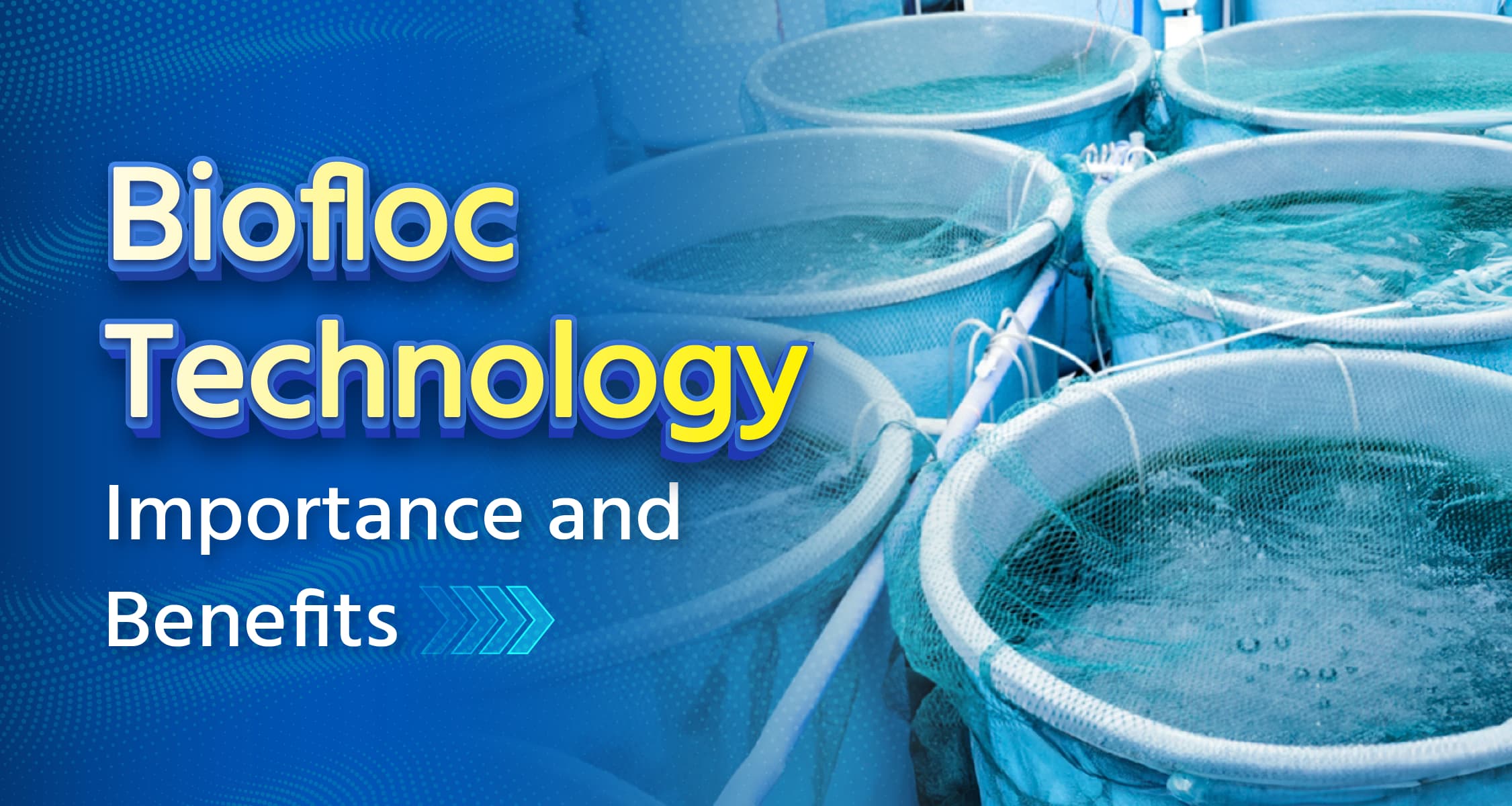Biofloc Technology: An Efficient Method for Fish Farming in Limited Spaces

Fish farming is a viable option for increasing farmers' income. We all know that having a pond is essential for fish farming. Small farmers often lack the space for a pond, posing a significant challenge for them to engage in fish farming. However, did you know that fish farming is possible even in limited spaces? Now, with the biofloc method, successful fish farming can be done even in small areas. Let's delve into detailed information about biofloc fish farming.
What is Biofloc Technology?
- Biofloc is a new technique for fish farming, in which fish are cultivated in limited space. In this method, fish are reared in tanks where waste from fish and excess feed are converted into protein-rich cells. Later, this is used as feed for the fish.
Biofloc Technology is Used for the Farming of Which Fishes?
- Through this technique, species such as Pangasius, Tilapia, Desi Magur, Singhi, Common Carp, Pabda, etc., can be farmed.
Resources Required for Biofloc Technology
- For fish farming using biofloc technology, an electricity supply is essential. Without electricity, fish farming using this technique is not feasible.
- Additionally, you will need cement tanks, tarpaulin tanks, aeration systems, probiotics, and fish seeds.
Benefits of Fish Farming with Biofloc Technology
- Fish farming can be done even without a pond.
- Compared to pond-based fish farming, this technology reduces the cost involved in fish farming.
- Water conservation is achieved in fish farming through this method.
- Fish farming can be done in a limited space.
- Compared to pond farming, the Biofloc technology requires less labor.
- There is no risk of fish theft.
- In this method, diseases in fish can be easily controlled compared to other methods.
Disadvantages of Fish Farming with Biofloc Technology
- Higher Cost: I mplementing biofloc technology for fish farming requires establishing its fundamental infrastructure, which can be quite expensive, particularly for small-scale farmers. This initially demands higher investment.
- Lack of Technical Knowledge: Farmers need to possess technical knowledge to effectively manage the system under biofloc technology. The absence of such knowledge can pose significant challenges.
- Limited Selection of Species: With biofloc technology, only a few species of fish can be successfully farmed, restricting the options available to farmers.
- Increased Risk of Diseases: Compared to traditional fish farming methods, the likelihood of diseases occurring in fish is higher when utilizing biofloc technology for fish farming.
Points to Consider Before Starting Fish Farming
- Equipment: Prior knowledge about equipment such as tanks, pumps, filters, etc., is crucial. Understanding the procedures to be followed in case of any malfunction in the equipment is also necessary.
- Water Quality: Pay attention to the quality of water for the development and better health of the fish. Understanding parameters such as water temperature, pH levels, oxygen, and ammonia levels is essential.
- Understanding Local Market: Before starting fish farming, it is important to understand the demand for different types of fish in the local market. Determining the price and demand of fish to sell in the market is crucial for decision-making.
- Selection of Species: Choose fish species according to environmental conditions and market demand.
- Fish Nutrition: Provide high-quality nutritious feed tailored to the specific species of fish for their optimal growth and health. Arrange plant-based or insect-based feeds according to their types.
- Disease Management: Like other animals, fish also suffer from various diseases such as red spot disease, white spot disease, tail/fin rot disease, dropsy, etc. It is essential to be aware of the symptoms, prevention, and control of these diseases to maintain fish health.
- Cleanliness: Pay special attention to the cleanliness of the tank. Change the water as needed. It is necessary to change the water in case of diseases in fish or after their death.
Cost and Profit in Biofloc Fish Farming
- The cost and profit of fish farming using biofloc technology depend on the size of the tank.
- In larger tanks, fish growth is typically more robust.
- For instance, if you invest in a 10,000-liter tank, the approximate cost would be around 32,000 rupees. This cost includes the tank itself, along with associated equipment.
- Such a tank can be utilized for up to 5 years.
- Expenses increase with the size of the tank.
- In a 10,000-liter tank, the cost of fish farming amounts to about 25,000 rupees every 6 months.
- With a tank of this size, you can expect to sell approximately 5 to 6 quintals of fish every 3 to 4 months.
- Farming expensive fish varieties yields higher profits.
Have you ever used biofloc technology for fish farming? Share your answers and experiences with us in the comments. If you found this information helpful, don't forget to like and share this post. For more such valuable insights, follow the 'Krishi Tech' channel now.
Frequently Asked Questions (FAQs)
Q: What is biofloc fish farming?
A: Biofloc fish farming is a modern technique where fish are cultured in tanks instead of ponds. In this method, fish waste is converted into protein-rich feed for the fish.
Q: Is biofloc fish farming safe?
A: In recent years, biofloc fish farming has gained popularity due to its higher productivity and lower environmental impact. When practiced using proper methods and precautions, biofloc fish farming is considered safe.
Q: Which fish is good for biofloc fish farming?
A: Pangasius, Tilapia, Indigenous Catfish, Singhi, Common Carp, Rohu, etc., are suitable for biofloc technology.
Q: Is biofloc beneficial?
A: The benefits of biofloc fish farming depend on several factors including tank size, fish species, feed, electricity consumption, etc. However, if done correctly, biofloc fish farming can be substantially advantageous.
Please login to continue

Get free advice from a crop doctor
